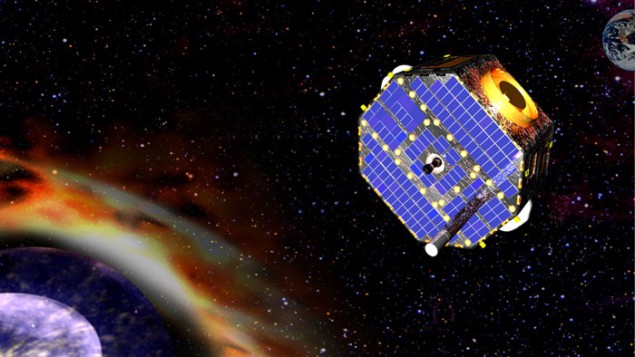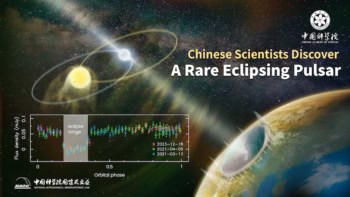
The Sun moves much more slowly relative to nearby interstellar space than was previously thought, according to scientists working on NASA’s Interstellar Boundary Explorer (IBEX) mission. Their study casts doubt on the existence of an abrupt “bow shock” where the edge of the solar system meets the interstellar medium – instead suggesting that the boundary between the two regions is much gentler than previously thought. The discovery could lead to a better understanding of how some cosmic rays can enter the solar system, where they pose a threat to space travellers.
The bow shock refers to the region where the heliosphere – the huge bubble of charged particles that surrounds the Sun and planets – is believed to plunge into the interstellar medium. The commonly accepted idea is that the solar system moves faster (relative to the speed of the interstellar medium) than sound itself, rather like the shock wave that forms ahead of a supersonic aircraft. Charged particles moving supersonically in the heliosphere therefore pile up at the front of the shock, with the density of charged particles dropping off rapidly where the heliosphere meets the interstellar medium.
Astronomers have always had good reason to believe the bow shock exists because similar structures can be seen surrounding nearby stars. But the new analysis of IBEX data – which has been carried out by David McComas of the Southwest Research Institute in Austin, Texas, and an international team – suggests that the bow shock does not exist after all. In other words, the solar system is not moving as fast as we though relative to the interstellar medium.
Fast-moving atoms
Launched in 2008, IBEX orbits the Earth and is designed to study fast-moving neutral atoms. What McComas and colleagues did was to use IBEX to characterize neutral atoms from the interstellar medium that cross into the heliosphere. Because these atoms are not electrically charged, they are not affected by magnetic fields – and so their speed should correspond to the relative velocity of the interstellar medium.
The study suggests that the relative speed is about 84,000 km/h, which is about 11,000 km/h less than previously thought. In addition, data from IBEX and earlier Voyager missions suggest that the magnetic pressure found in the interstellar medium is higher than expected. When these parameters were fed into two independent computer models of the heliosphere, both suggested that a bow shock does not exist, but rather a gentler “bow wave” occurs at the interface.
Gliding through space
“A wave is a more accurate depiction of what is happening ahead of our heliosphere – much like the wave made by the bow of a boat as it glides through the water,” explains McComas.
According to McComas, decades of research based on the presumption of a bow shock must now be redone using this latest information. “It’s too early to say exactly what these new data mean for our heliosphere,” he says. Given that the heliosphere shields the solar system from some cosmic rays, McComas says “there are likely [to be] implications for how galactic cosmic rays propagate around and enter the solar system, which is relevant for human space travel”.
The work is described in Science.



